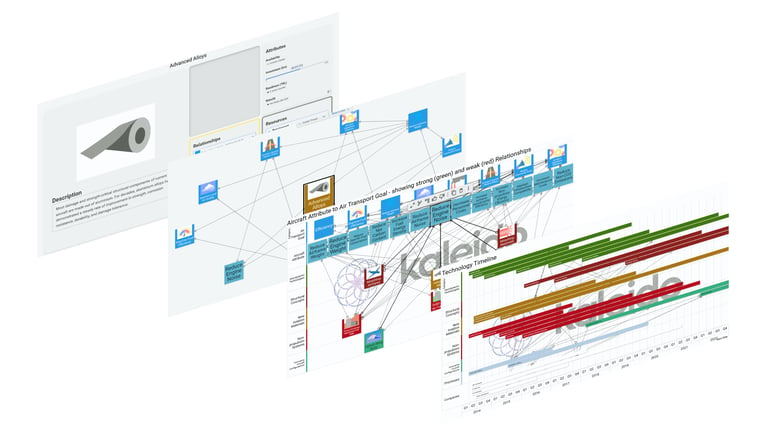Transforming Programme Planning with SharpCloud + AI
Problem
All decade-scale public infrastructure programme's with many interdependent stakeholder streams, enter an early Front-End Engineering And Design (FEED) phase. Business Case's are needed to be submitted for investment appraisal for sanction, typically both before and after. During this period:
Contracts are not yet awarded; with many critical partners yet to be engaged.
The “plan” in effect is a Gantt chart built in Primavera P6 - massive, granular, and largely speculative.
Logic and scheduling dependencies lack realism (since so much was unknown), so the network had minimal variability or ability to model probabilistic logic.
Non-planner stakeholders such as executives, commercial, operations - and even Project Managers - are exposed to unwieldy PDFs containing hundreds or thousands of schedule lines printed, then “reviewed” with highlighters, without real insight or trust.
This is a very common pathology in large programmes. Whereby early plans masquerade as schedules rather than strategic, flexible plans; and communication is trapped in technical artifacts few can consume or challenge meaningfully.


Challenge
Before intervention, programme's face two related problems:
1. Plan as schedule, not plan as strategy
Because of reliance on linear Gantt logic in P6, the schedule implicitly “locked in” decisions before stakeholder alignment, reducing strategic flexibility. Unknowns are suppressed rather than surfaced. Dependencies and inter-stream constraints are not visible or adjustable in a strategic view. Past decision events have proven that in a short time after sanction the stress on detailed schedules cause for significant change and constant rework, resulting in the schedule looking completely different at the next gate or budget cycle.
2. Opaque communication and low stakeholder engagement
The only way non-planners could see or interact with a plan is via massive printed schedules or static PDFs. This means decision-makers are disconnected, unable to see interdependencies, tradeoffs, risks, or the strategic narrative behind the timing decisions. The only option is to view the 'Plan on a Page', or Level 0 plan, which - conversely – causes an issue of not enough detail or information being communicated.
In short: planning artifacts are often too detailed too soon, opaque to most stakeholders, and unable to adapt or invite challenge.


Solution
Kaleido introduced a hybrid approach combining SharpCloud - a strategic portfolio visualisation and roadmapping tool – with AI integration to support conversational editing and governance.
Here’s how we structure it:
1. Setting the narrative layer with SharpCloud
We treated the programme not as a single mega-schedule, but as a story with multiple chapters: design streams, transformation initiatives, risk exposure, delivery models, etc.
Aligned project outcomes to goals and worked backwards (right to left).
We import schedule data via connectors (SharpCloud supports P6 / Oracle connectors).
We build “stories” (SharpCloud’s metaphor for narrative viewsets) that unified delivery, transformation, and risk streams.
We map dependencies and interfaces visually, allowing stakeholders to explore cause & effect, not just tasks.
Risk workshops and interface mapping are held inside SharpCloud: stakeholders could see real-time visualisations of delay ripple effects or constraint bottlenecks.
Different role views (executive, delivery, commercial) were built so each stakeholder saw only their relevant slice of the narrative, using the Role-Bases Access feature.
This produced a living, interactive roadmap rather than a monolithic schedule.


2. Embedding AI via MCP (Model Context Protocol) for conversational editing
To streamline change control, consistency, and speed, the Kaleido team worked with the SharpCloud technical team to integrate a Model Context Protocol (MCP) server. This enabled a conversational / agent interface layered on top of the SharpCloud story model. Here’s how it functioned:
Users make comments or change requests in “collaboration” mode on stories.
Change requests could be expressed in plain language (e.g. “slide design stream 12 months later,” “add dependency from X to Y,” “remove buffer here”).
The AI agent, via MCP, interpreted the request, validated it against the story data model, and applied the change to the underlying SharpCloud story model.
The creator saw the change materialise; no manual rework or re-editing of multiple visualisations was needed.
New stories could even be generated from a blank slate by prompting the AI with high-level structure and vision.
Template story frameworks are built; the AI could instantiate a template and adapt it based on context.
Critically, configuration control can be preserved as only authorised “creator” roles can author stories; collaborators comment and suggest, but not freely override. The AI acted as the gatekeeper to enforce model integrity and consistency.


SharpCloud transforms traditional project portfolio management through sophisticated relationship mapping and visualisation technology. The platform excels at uncovering hidden interdependencies across complex portfolios, enabling dynamic "what-if" scenario planning that goes far beyond static Gantt charts.
Their capability to connect projects to strategic goals, navigate complexity through relationship visualisation, and provide holistic knowledge integration. This makes them an essential component of our strategic roadmapping and capability mapping services.







